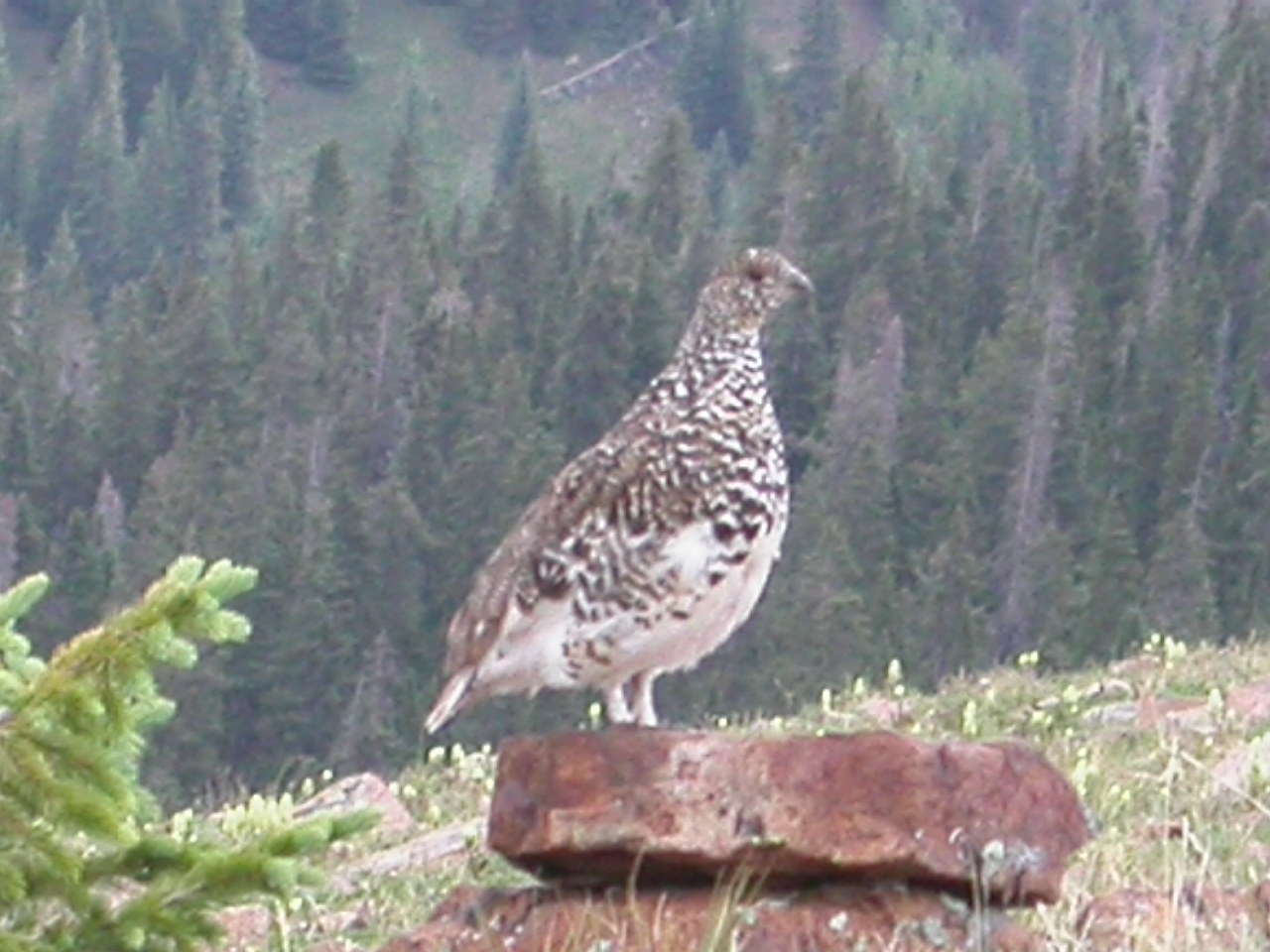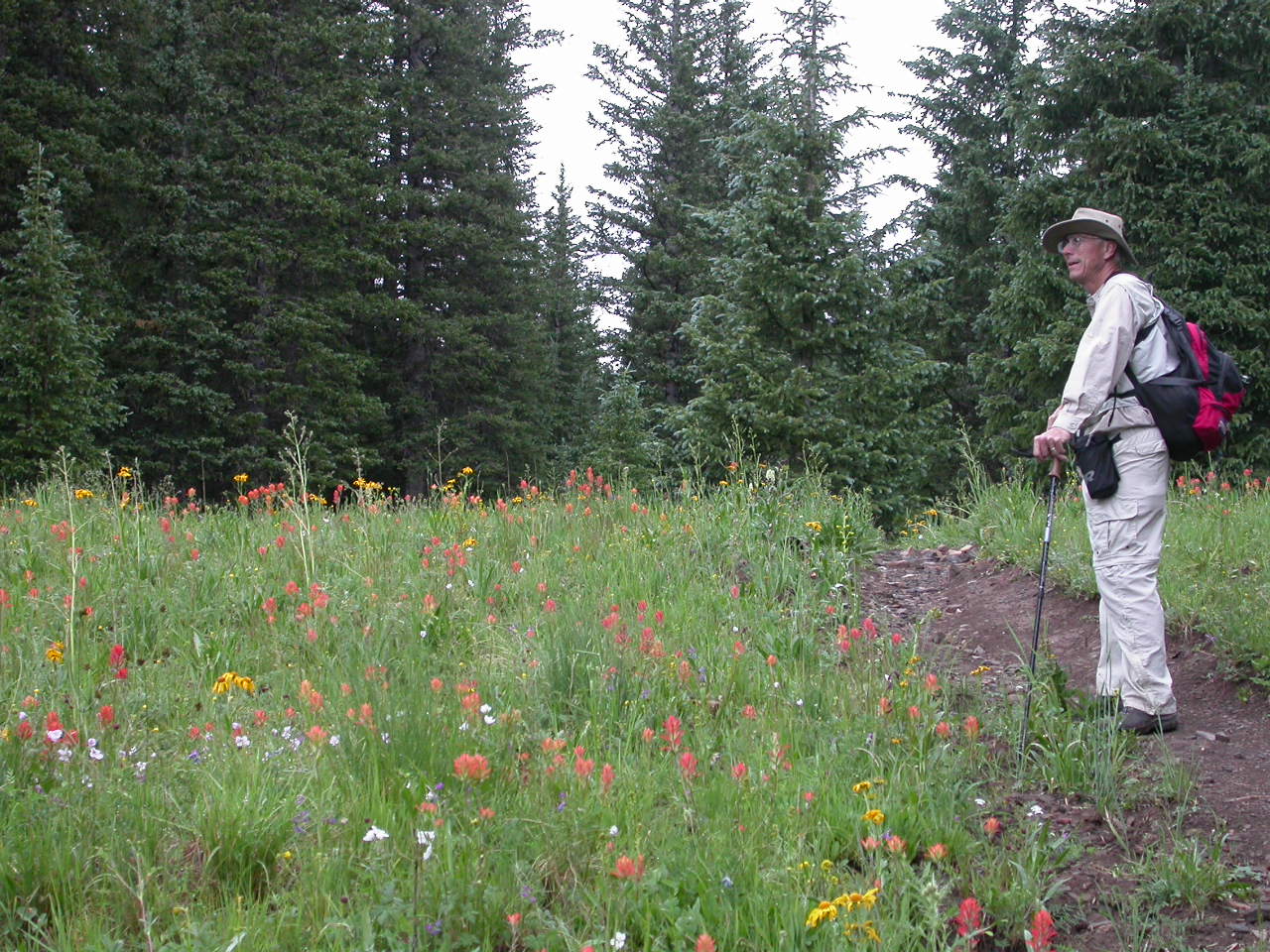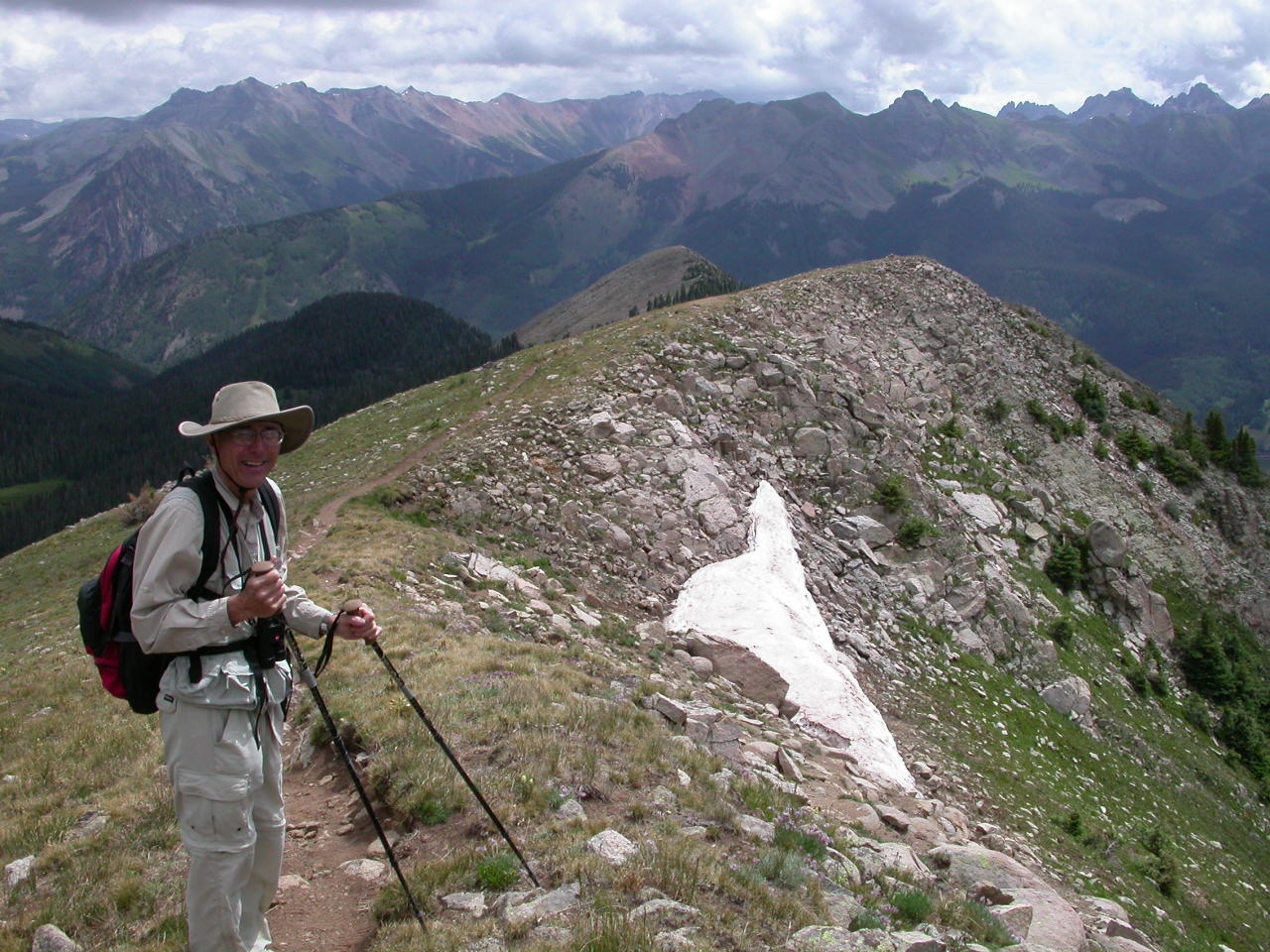White-tailed Ptarmigan - Yes! - July 21, 2010

We missed it in Alaska and in Montana in 2007. This year we again put it on our target list. We hoped to find it in Washington State, but deep snows prevented access to its primary habitat. We made one valiant attempt, renting snowshoes at Mt. Rainier with the intention of treking into its range, but were repulsed by heavy fog and avalanche warnings. We enjoyed a sweaty and hypoxic climb that resulted only in misted eye glasses and the eerie feeling that we were going to be lost on the mountain.
The next possible place to find the bird was in the southwest Colorado Rockies. We planned to spend a week here in Cortez. I wrote and e-mailed local bird clubs and inquired at local wildlife offices. All suggestions led to central Colorado, and we did not have time for that. Instead we reconoitered the nearby ridges. On our first sortie we drove 25 miles up a rough dirt road to find access to a trail that took us after a few miles to alpine meadows. This held promise, but the trail was heavily used by dirt bikes and I did not want to drive our little car up the access road again.
On our second venture, we drove to Durango and north to Molas Pass. There were trails there, but no reports of ptarmigan. The drive was long.
I checked "e-bird" reports and noticed one decade-old report of the bird in the Lizard Head Wilderness that is about fifty miles from here on a paved road. There was a trail to above tree-line. After some discussion, Anne and I agreed that this would be our best shot.
This morning we arose at four a.m., breakfasted, and started up the highway. We noticed a thunderstorm to the northwest. This raised concern, but we arrived at the trail-head at just before 7:00 a.m. Another hiker was preparing to make a walk up the ridge. We prepared our gear and ventured forth. The ponchos were in the pack, but we knew that any lightening would turn us around at tree-line.
The rain did not come. The clouds softened the summer illumination giving soft light to the alpine meadows that were full of columbines, larkspurs, and assorted daisies, asters, and other "composites." We looked for birds in the woods and found pine grosbeaks, three-toed woodpeckers, and other small birds. Fox and Lincoln's Sparrows sang in the openings.
The trail was very steep, taking us 1,800 feet up to the top of Black Face Mountain at a bit more than twelve-thousand feet above sea level. The trail crossed numerous avalanche zones that were cleared of trees and talus slopes covered with boulders and cobbles. In between the openings were groves of blue spruce and Douglas fir. The air was cool and damp. Rain had fallen overnight freshening the small streams along the way.
The hike was lovely, but we both suspected the objective was out of reach. Even if the weather permitted us to walk the ridge-top, we were unlikely to find the bird. The biologist contacted at the visitor's center said this was too far west and suggested we go north. There was only one report in the past decade. The weather was marginal. Ptarmigan become silent in July and look like lichen-covered cobbles. There were lots of lichen covered boulders in the meadows. Still we persisted. We have acclimated to altitude, but the climb was still difficult in the thin air.
Reaching tree line we saw the other hiker had advanced toward the peak. The sky was mostly cloudy, but the clouds were largely horizontal. The breeze was modest and the air was now cold. We started into the alpine lawn. At first we followed the trail, but when the meadow opened up, I suggested I walk to the side of the trail to increase our odds of flushing a bird. We walked in parallel about fifty meters apart. At a promising location I pulled out my I-pod and played one round of White-tailed Ptarmigan calls. As I did so Anne saw a bird spring from the grass near her and fly past me. I frantically tried to turn off the machine and call to her not sure she had seen the bird. I saw its white wings and recognized our quarry. It passed ten feet over my head and had continued over the ridge top.
In moments I pocketed the I-pod and began walking toward the slope where the bird had disappeared. Slowing I began to scan and soon spotted the bird tacking back toward me on the ground. It clearly was not happy to hear the call on its territory. Anne came up next to me and we observed the bird approach to about fifteen meters and stand on a rock. Then it began calling. Watching the cock, we observed movement in the meadow near it and eventually observed two hens and at least half a dozen chicks coursing in search of breakfast.
We kissed, Anne snapped a few photos, and we continued to the peak excited and relieved that we had found this bird. Other climbers joined us at the top where we lunched. The abrupt point of Lizard Head Mountain was a focus of our attention. The greater summit of Wilson Mountain remained hidden in clouds. We never saw it. Before storms developed in the afternoon, we had started down.
About a hundred meters from the peak we saw a hen ptarmigan standing on a rock but a few meters from the trail. Watching her we observed several chicks feeding in the meadow there. We snapped her picture and gently walked past. She stepped nervously off the rock, murmured to her brood, and they began walking off.

- woodstrehl's blog
- Login to post comments